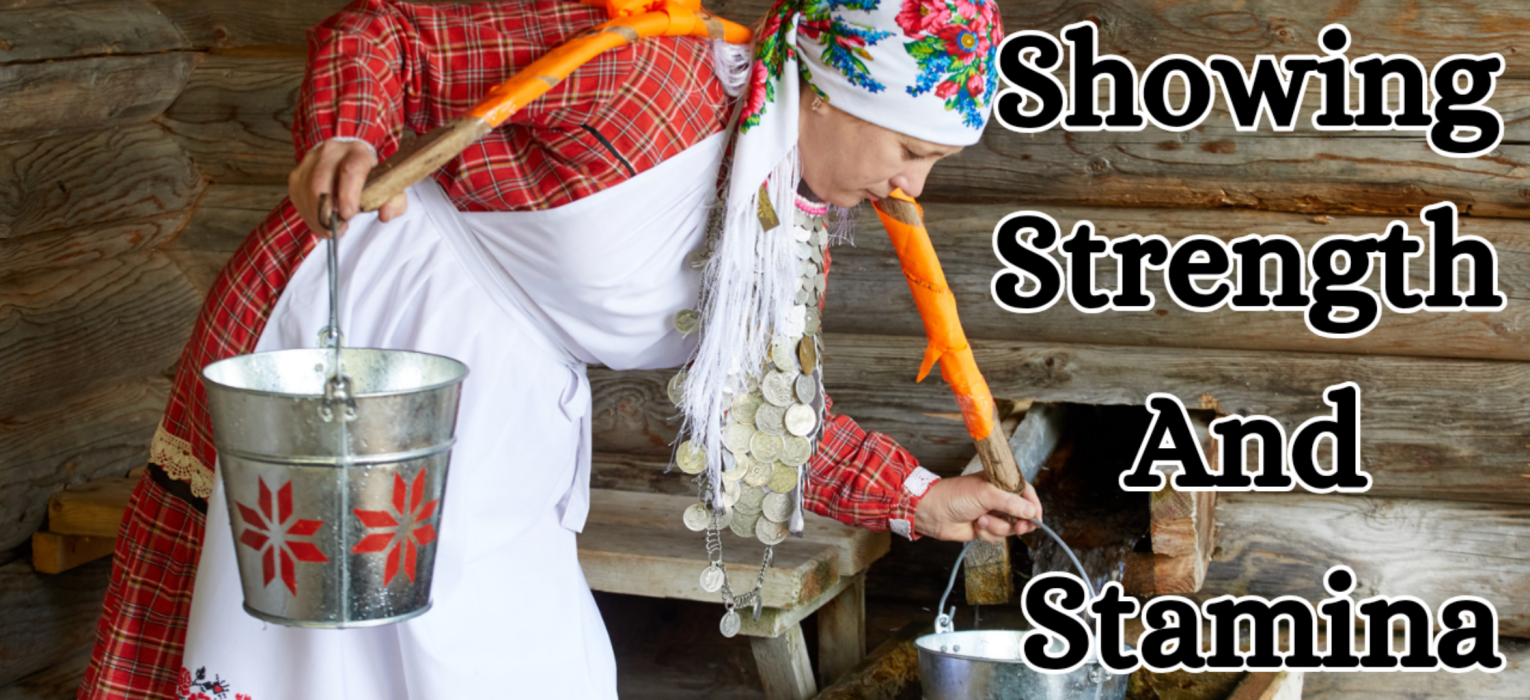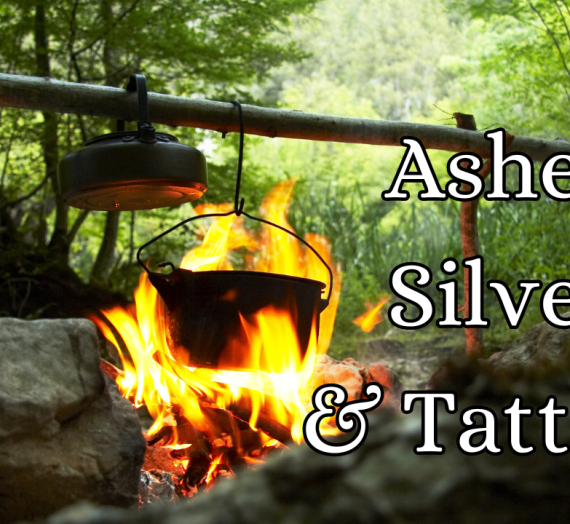How much water will need to be hauled to do laundry? What is more important on the farm, strength or endurance? How many gallons of water are used per day? What is silver skin? Find out on this episode.
Welcome to Writing Rural with Alley, the fiction writer’s inspiration station for rural life and lifestyles, from historical to post-apocalyptic, helping you bring your rural stories to life! I’m Alley, and this is episode 54, 5 Unexpected Workouts. Stick around to the end to find out how things could go wrong. Now, let’s get into this.
If you are listening to this in real-time, it is New Year’s Day of 2024. Happy New Year! With all the New Year’s resolutions, the most common being to lose weight, there seems to be no better topic than workouts. Today, we will cover five unexpected workouts in rural life.
1) Fetching Water
Fetching water, or as we call it here, hauling water, is the act of moving water from the well, stream, cistern, or other water source to wherever the water is needed. This could be for drinking, cooking, watering livestock, watering the garden, washing laundry, and many more. This sounds deceptively easy, but it is more work than most people realize.
You see, the average one gallon of water (3.8 liters) weighs 8.34 pounds (3.8 kg). A typical well bucket holds two gallons, making it 16.68 lbs. (7.6 kg) per bucket. The average American household uses between 80 and 100 gallons per day. Using the low end means that it is just shy of five buckets of water used in the home per day. Now, the average well is about 100 feet from the home and between 100 to 800 feet (30.48-243.84 meters) deep. If we take half, that makes it 450 feet (137.16 meters). So imagine having to pull 16.68 lbs. (7.6 kg) straight up 450 feet (137.16 meters), then walk it an extra 100 feet (30.48 meters) into the house, and then repeat that five times. Tiring, right? Ah, but we are not done.
There is also livestock to think about. Most farmers use a 5-gallon bucket to water them and will pour the water into two buckets to carry the water to the troths. A 5-gallon bucket holds 41.7 lbs. (19 kg) of water. So let’s say your character has 40 head of cattle (That’s pretty common in my part of the world) to get meat and milk from and sell calves. Cows will need several pastures to graze so they can be rotated around to let the grass grow back after they ate it, and they can save money on spring, summer, and fall feed.
Cows will drink between 9 to 12 gallons per day, and lactating cows will drink 30 to 40 gallons per day. With a ratio of one bull for every 100 cows, that would mean there will be 39 females and one male, called a bull. Cows normally have one calf per year. That means at the very low end, the herd will need 1,179 gallons of water per day, and at the high end, they will need 18,720 gallons of water per day.
Now a smart farmer will have a pond or stream on the far pastures, or even all his pastures, since most troths only hold 150 gallons of water each, but the ones closest to the home do not always have a pond or stream, although some do. So let’s say your character had to water them in a troth. That means that on the low end, it will take about 72 five-gallon buckets to refill the troth, and at the high end, it will take 320 five-gallon buckets to refill the troth. That would take a large chunk of time, and equals one serious workout!
An interesting story to go with this. When I was younger, and pregnant with my second, our well was not deep enough to support our livestock at the time. During the summer months we would have to fill the back of the truck with 55-gallon rain barrels and fill them in the river. One day a young body builder who could lift over 1,000 lbs. (453.592 kg) came to help, because I was pregnant, and he was trying to be kind. He barely lasted five minutes doing a bucket brigade where one person hands the bucket to the next in line, and then back. He was strong, but
had never built an endurance. That was the day he learned the difference in the two types of workouts.
2) Washing laundry by hand
I did a whole episode on washing laundry by hand and the many ways it can be done, but let’s go with the modern off-the-grid type because I have actually done that one myself.
There are two ways I have done this. One was with a bathtub, and one was with a #5 washtub. The basic concept is the same, one wash cycle, scrubbing if needed, and two rinse cycles.
For the #5 wash tub, it holds only small amounts of clothing at a time. Four pairs of adult pants or eight adult shirts or a dozen socks and underwear. Since the loads are small, the wash and rinse times are smaller at about 15 min each. Using a modern agitator that basically looks like giant stiff plunger, you have to pump it up and down on the clothing for the whole time. Now, this sounds easy, but about five to ten minutes in, your arms will be tired!
Then you’ll have to wring the clothing out. This takes grip strength that is hard when wringing towels and horrible when wringing denim jeans! Ah, but you are not done yet! You will have two rinse cycles. That makes roughly an hour for one load. If you have a larger family like me, you will be at this for hours! I also have done this in a five-gallon bucket and even the plastic totes that are used to store things.
Remember that part about water? Yep, it applies here, too. A #5 wash tub holds roughly 5.5 gallons of water, but since there is clothing to take up some of that space, 5 gallons will do just fine. More work if you heat any of it.
As for a bathtub, the standard tub holds 80 gallons of water. It takes much larger loads, and many modern off-the-grid homes still have running water. I always liked the control of the temperature of that kind of wash. However, your character will likely lose running water in an apocalypse. While the bathtub is nice, the wash and rinse times will be longer, because there are more clothes, about 30 minutes. To top that time off, it can take up to ten minutes to wring out that much laundry and my hands were always exhausted afterward. That means this can take two hours. However, there are less loads this way.
3) Millstone
Millstones are when two stones are used to crush and grind up food. Most commonly it is used for wheat, but it can be used for corn, barley, and more. Many millstones in history were used by villages, and these could weigh
hundreds of pounds. However, the most common ones were for single use, sometimes called hand-grinding mills.
These were normally one large stone about 30 to 45 inches (762 to 1,143 mm) wide in a circle or square, that was flat, (no comma) or slightly dipped in. Think of this as roughly the size of a tire. A second stone that was between the size of a basketball to that of a softball with at least one rounded side was used. These can weigh between 12 lbs. (5.44 kg) and 45 lbs. (20.41 kg).
The idea is to put the wheat, or whatever they are grinding onto the bigger stone and use the smaller one to crush and to grind with. The smaller stone is a semicircle shape, sometimes called a half-disk. This could take hours of moving the smaller but still heavy rock around, and wiggling it back and forth to grind with. Even the lighter stone will grow tiring after a few hours, making this another type of workout.
4) Meat grinder
A meat grinder is what cut-up pieces of meat are placed into, and then your character will turn the hand crank to make it work. The meat is twisted and cut up inside the grinder, and out comes ground meat. This is less a test of strength as even a three-year-old can turn a meat grinder. This is about endurance. I’ve done so, and it can take a few hours to grind up the meat of a deer, which is roughly 50 lbs. (22.67 kg) per deer.
However earlier grinders took much more time. I know, because my first one was a hand grinder from the late 1800’s. Yes, it had the date it was manufactured printed into it. It took me about 12 hours to grind up 25 lbs. (11.33 kg) of meat. This is because it was decided to not have fat, what is called silver skin, go through it. Silver skin is the connective tissue found in the muscles of animals, and it is almost impossible to get all the connective tissue off the meat.
5) Churning butter
Churning butter is another thing that is not about strength, but endurance. We have all seen the old wooden buckets with a stick that looks like a weird club used to churn butter in the movies or even cartoons. It takes roughly 20 to 30 minutes churning the butter roughly 120 times per minute. That is two times per second. Doable, but keeping that pace is what is exhausting. Most people slow down and that means they are doing this longer. Although, there are other ways to make butter that are not as much of a workout.
Fun fact: According to the United Nations, as of 2023, 1 in 4 people globally do not have access to running water.
What could possibly go wrong?
Before we get to the best part, if you enjoy this podcast, I hope you’ll take a minute to follow, rate, and review on your podcasting platform. And if you are listening on YouTube, subscribe and hit that Like button. Don’t forget to share with a friend. Now for everyone’s favorite part!
Likely to go wrong: Your character spends two hours doing laundry by hand in the bathtub, and the next day, their arms are sore from all the work.
Likely to go wrong: Your character is using a meat grinder and has to switch arms every ten to fifteen minutes because their arms wear out from the work.
Likely to go wrong: Your character is pulling the 16 lbs. of water in the well bucket up, and they have to take turns with someone else, because doing this repeatedly is exhausting.
Likely to go wrong: Your character takes turns with someone else while grinding meat because their arms are sore from turning the grinder for long periods of time.
Possible to go wrong: Your character is churning butter and has to stop to rest their arms several times as they are not used to making the same movements over and over again for 20 or more minutes at a time.
Possible to go wrong: Your character has to use their body weight to move a heavy millstone back and forth to grind the wheat because they do not have the strength to do it otherwise.
Possible to go wrong: Your character is carrying a five-gallon bucket of water to water the animals, and they find it is hard to hold away from their legs. This causes the bucket to repeatedly bump their legs and splash water on themselves. This could cause them to become very cold in the winter.
Unlikely to go wrong: Your character is a strong person, but has never had to use endurance in the way farm work does, and finds that people much weaker than him can do the work better because they have built their endurance.
Unlikely to go wrong: Your character is pulling the well bucket up their 100-foot deep well and loses their grip on the rope, causing the bucket to fall back into the water and they have to start pulling it up all over again.
Improbable but still technically in the realm of possibilities: Your character has a deep 800 foot well, and they struggle to pull the 16 lbs. of water up repeatedly so they will have enough water for the day.
Improbable but still technically in the realm of possibilities: Your character struggles to lift a millstone, and drops it on their fingers, breaking them.
Thanks for listening! You can find the show notes and helpful links to learn more on my website, alleyhart.com. That’s A-L-L-E-Y-H-A-R-T.com. Subscribe or follow for more episodes. Connect by dropping me a comment on my YouTube videos. A new episode comes out every Monday. Until then. Happy wordsmithing.




